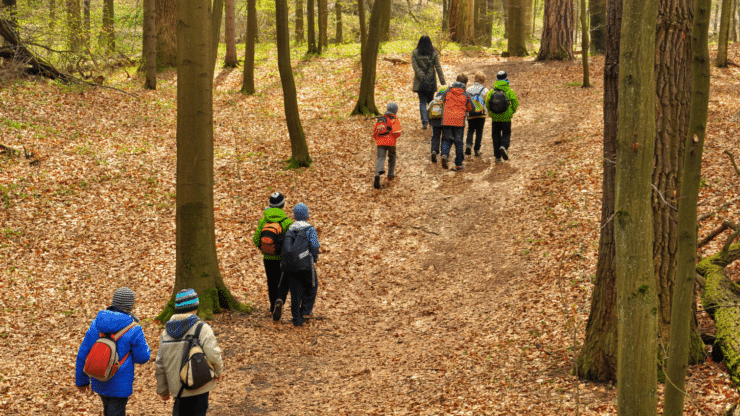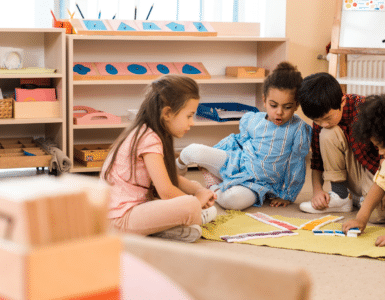You might have heard of Montessori, Waldorf, or Reggio Emilia schools, but have you ever heard of a Forest School?
Forest Schools are play-based learning programs that emphasize outdoor activities and often occur entirely in nature. During the Covid pandemic, some traditional schools decided to take the forest school approach and hold more activities outside to ensure that students had enough fresh air and distance to reduce the spread of the disease.
But Forest Schools have a lot of benefits beyond being an excellent way to socially distance during a pandemic. Let’s explore the world of Forest Schools!
Forest School Origin Story
Not every school that has outdoor learning is a Forest School. The concept of outdoor schools has existed since the 1950s and originated in Scandinavia.
Forest Schools were developed in 1994 when a group of UK nursery school educators from Bridgewater College in Somerset traveled to Denmark to observe Forest Kindergartens.
These educators then helped develop the UK Model of Forest Schools, which has now spread all over the UK and other parts of the world.
Forest School Philosophy
Forest Schools have a play-based learning approach similar to Montessori and Reggio Emilia. All three approaches encourage children to be independent, inquisitive, creative, and confident.
The big difference between Forest Schools and the other popular, play-based learning approaches is that all or most of the school time is spent outdoors. Depending on the school and the weather, some Forest Schools might have some indoor time, but the main focus of a Forest School is to encourage children to spend time in nature and explore the outdoors, even in inclement weather.
The core philosophy of a forest school is to provide children with regular, hands-on experiences in natural outdoor environments in order to foster a love for nature, creativity, independence, and confidence.
Nature as the Classroom
In a Forest School, nature is the classroom and varies depending on where the school is located. Some schools are deep in the forest, surrounded by trees, while other schools may be located in an open meadow next to a pond. Forest Schools utilize the natural space around them to encourage children to connect to nature and learn about the world.
ALSO: What is the Flipped Classroom Model?
Some Forest Schools might have a makeshift classroom set up outdoors with logs and tree stumps serving as desks and chairs. Other Forest Schools might have an outdoor tented area for rainy days, but children will still be encouraged to spend time outdoors, even in the rain and snow.
The Forest Curriculum
Forest Schools have a child-led approach to education, where children learn by exploring their environment. That means that students do not have tests and homework like in traditional schools. Teachers are often referred to as “Forest School leaders” and are more like guides who plan activities based on the natural environment and the individual interests and needs of each student.
There is no set curriculum in a forest school. Similar to the Reggio Emilia approach, children can organically learn concepts like math, reading, and writing as they explore nature and play.
ALSO: 5 Cruelty-Free Places to Take Your Little Animal Lover
Children learn at their own pace and are in charge of their learning experience. If a teacher sees a child showing interest in something like building a bridge, the teacher will show the child how to cut wood and piece things together and will allow the child to experiment and figure things out on their own as much as possible.
No Safety Scissors Here!
An element of Forest Schools that might shock some parents is that kids can use real tools like saws, nails, and hammers, even as young children!
It’s typical to see kids sawing away at a log and nailing things together to build outdoor structures. Teachers will show children how to use the tools as well as how to follow important safety precautions before handing over these tools, but they will leave the kids to it once they understand what to do, under supervision, of course!
Would you ever send your child to a Forest School? Let us know in the comments below!








Add comment